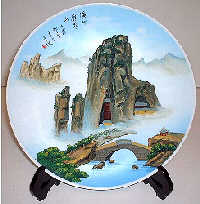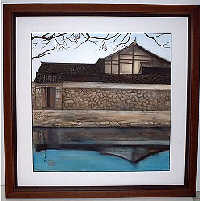 Ousu, known as an "oil-clay sculpture" and praised as a "stereoscopic painting", is a traditional artwork specially produced in Wenzhou of Zhejiang Province. Research shows that the art form was developed by assimilating the fabricating techniques of lacquerwork on the basis of ancient traditional clay sculpture.
Ousu, known as an "oil-clay sculpture" and praised as a "stereoscopic painting", is a traditional artwork specially produced in Wenzhou of Zhejiang Province. Research shows that the art form was developed by assimilating the fabricating techniques of lacquerwork on the basis of ancient traditional clay sculpture.
 History
History
 A piece ofOusufrom the Song Dynasty excavated in Wenzhou -- the oldestOusupiece unearthed thus far -- suggests that the art has a history of at least 900 years.
A piece ofOusufrom the Song Dynasty excavated in Wenzhou -- the oldestOusupiece unearthed thus far -- suggests that the art has a history of at least 900 years.
For centuries,Ousuartworks were mainly Buddha and gods intemplesor home decor, such as furniture and dowery. With a single color or gild and silver paintings, the art was rather rough for some time.
gild and silver paintings, the art was rather rough for some time.
After the founding of new China,Ousuartists made great improvements to the art while carrying forward traditional techniques. They ingenuously combined the pile sculpturing, painting and carving techniques to developOusuart into a comprehensive industrial art.
In 1959, Xie Xiangru, who had worked inOusufor nearly 50 years, added mineral pigments to oil clay, producing a rich and colorful material endowed with varied colors and a strong "attaching" capability.Ousuart ushered in a new era with its new firmer and more durable material, which is also fade resistant.